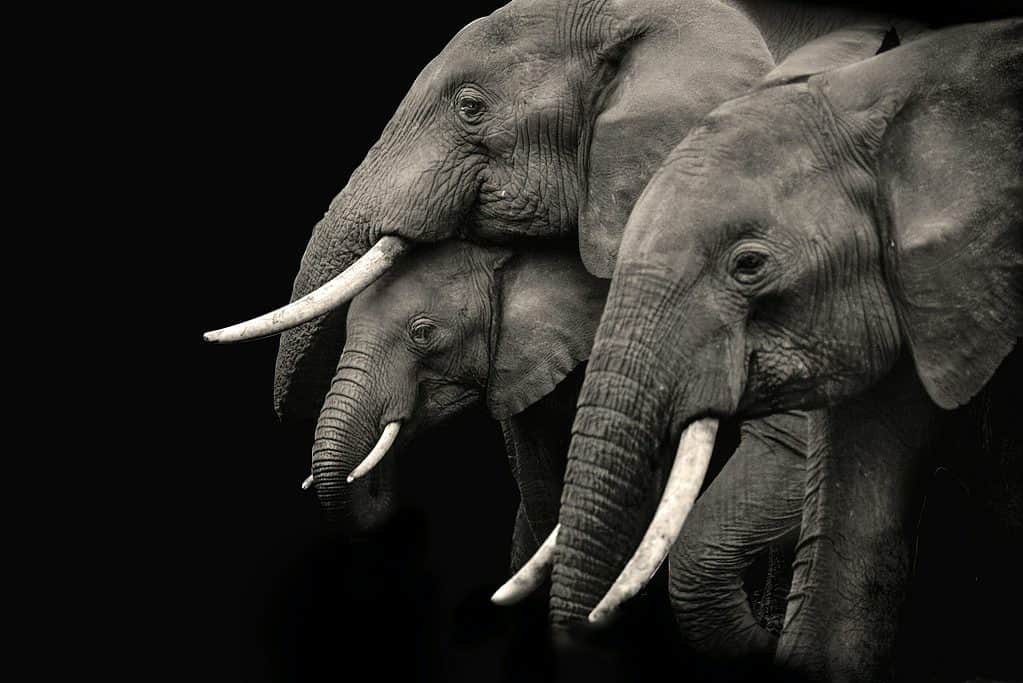In the 1980s, Japan was responsible for about a third of the global ivory trade. Now, although the country still possesses a significant ivory market, researchers say Japan is no longer a threat to elephant populations. So how can we build on this for other countries?

Ivory has been a prized commodity for thousands of years, being used either for decorations and jewelry or for traditional medicine (although ivory has never been shown to have any medicinal value). But ivory trade is fueling extinction: over 14,000 animals are killed every year for their tusks (an average of 40 a day), and over 80% of the planet’s elephants have been killed over the past century.
For decades, conservationists have struggled to get nations to stop trading ivory. In 1989, major progress was made: the international sale of ivory was banned under the Convention on International Trade in Endangered Species.
Almost every country on the planet has signed CITES — but still, some legal domestic markets persist, and the ivory trade is far from over. In fact, over 42 tons of illegal ivory were seized in 2019, one of the largest amounts seized in the past few decades.
Japanese officials have taken a decades-long stance that the country’s ivory market complies with sustainable trade and is tightly controlled, and therefore does not need any bans, dismissing calls from CITES.
Assessing whether this is actually the case is no easy feat, but in a new analysis, a team of researchers from the UK concluded that there’s some truth and Japan is no longer a driving force in the demand for ivory. But while Japan’s trajectory could serve as a model for other countries driving ivory demand (especially China), its trajectory wasn’t straightforward.
The winding road to stopping ivory trade
Traditionally, Japan has been a big driver of ivory trade. But by 2014, the annual value of the Japanese ivory industry was just 13% of what it was in 1989. But figuring out exactly what drove this reduction is enormously complex, especially since there is not much data on ivory trade in Japan.
“For this, we carried out an impact evaluation. We compiled a list of 35 potentially important factors that could have led to a fall in Japanese demand for ivory. These included the CITES international ivory trade ban, pressure from leading conservationists, Japan’s economic recession, and targeted demand reduction campaigns,” the study authors write in an article for The Conversation.
“We then interviewed 35 people with expertise in the Japanese ivory trade, including academics, NGO workers, members of the Japanese government and ivory traders and carvers. We asked them, based on their expert knowledge, whether they thought each of the factors may have affected ivory demand, and how.”
After compiling all this into a plausible list, the researchers got to digging, looking for evidence that would support these suspected causes. They found two main initial drivers: the CITES international trade ban and a domestic economic recession that started in 1992 and led to a period of economic stagnation. These two factors substantially reduced demand for ivory — but this was just the start.

Cultural factors, like a societal shift away from flaunting expensive goods then started playing a more significant role and continued to drive the reduction in demand.
“Conservationists often point to targeted demand reduction campaigns as key in reducing Japanese ivory demand. Our analysis instead suggests that they played a secondary role in bringing about change,” the authors add.
The findings are particularly important considering that ivory trade is driven by Asian countries, particularly China, Thailand, Vietnam, and the Philippines. Many in these countries have a positive opinion of ivory and would like to own it, though paradoxically, many also support ivory bans. For instance, 71% of the interviewed people in Vietnam said they would like to buy ivory, and at the same time, 91% of them would like a complete ban on ivory.
But this new study shows that even without a complete ban, there can be progress, and as demand for ivory dropped in Japan due to various cultural pressures, so too could be the case in other countries.
Conservation is not always intentional, the researchers note, and researchers and conservationists looking to protect elephants would be wise to note cultural factors and listen to the local voices to see what other, indirect factors, could help reduce the demand for ivory (and other animal products).
However, there’s still a problem in Japan: even with its demand dropping, it could still be a hub for illegal exports to other countries. As the price of ivory has increased more than 1,000% since the international ban, this needs to be tracked carefully, the researchers conclude.
“Given the long-term reduction in Japanese ivory demand, our analysis concluded that Japan’s ivory market no longer represents a threat to elephant populations. Yet it remains important to prevent illegal exports to countries where ivory is still highly valued. It would also be useful to track consumer data over time to see how demand fluctuates with Japan’s economic cycle.”
The study was published in the journal Global Ecology and Conservation.


